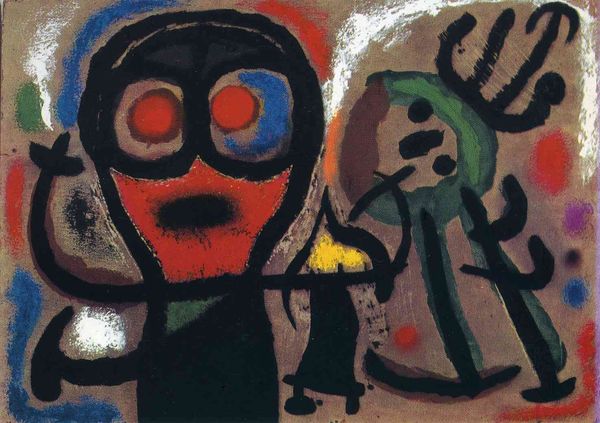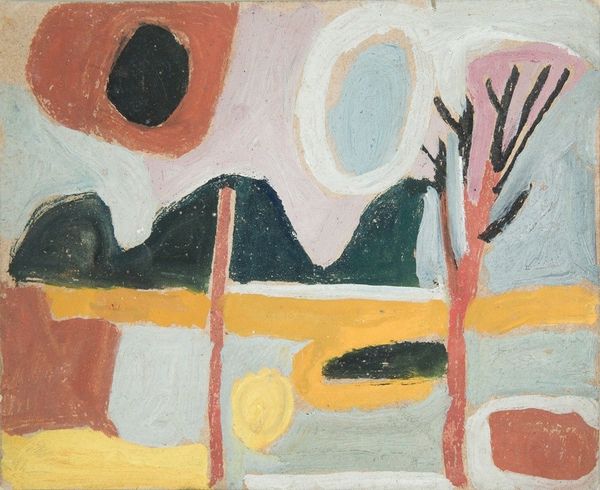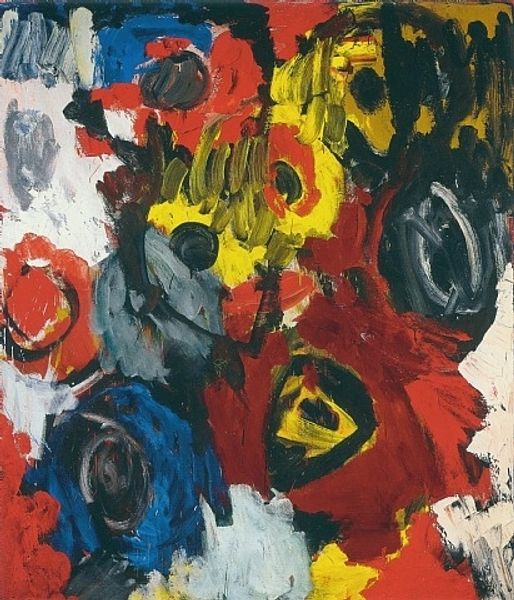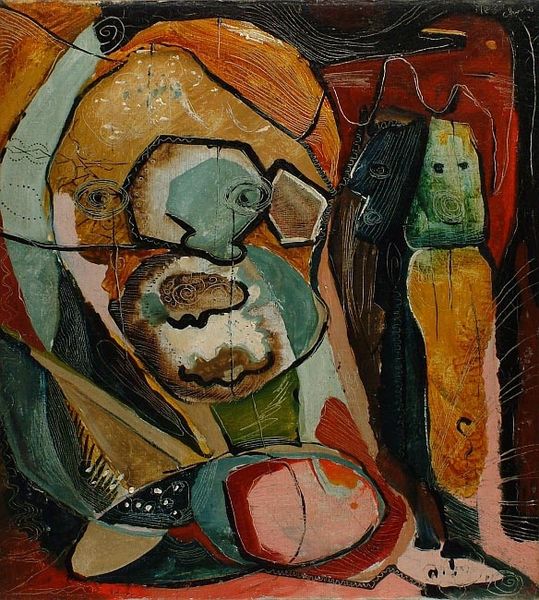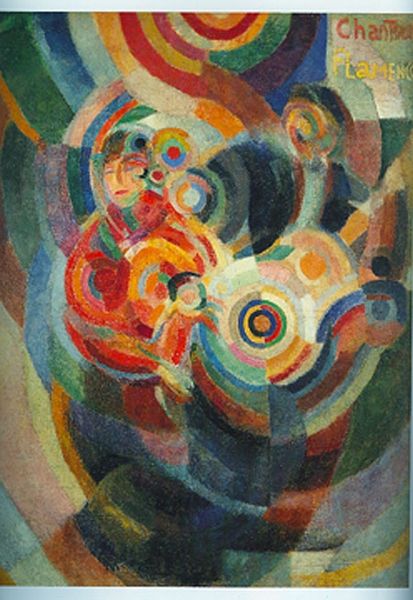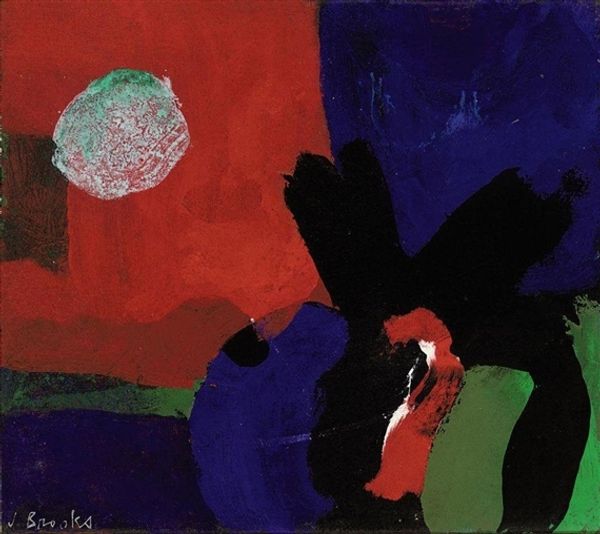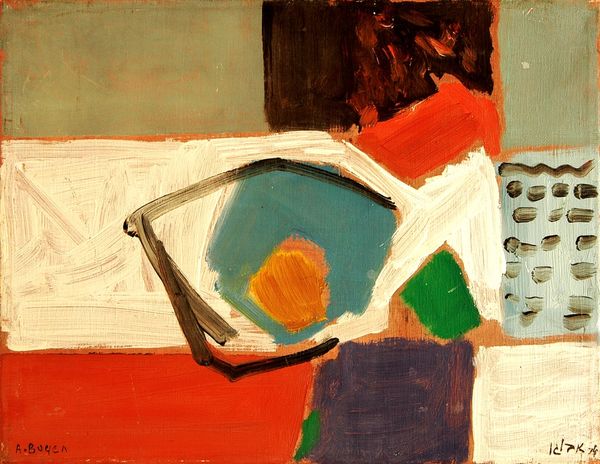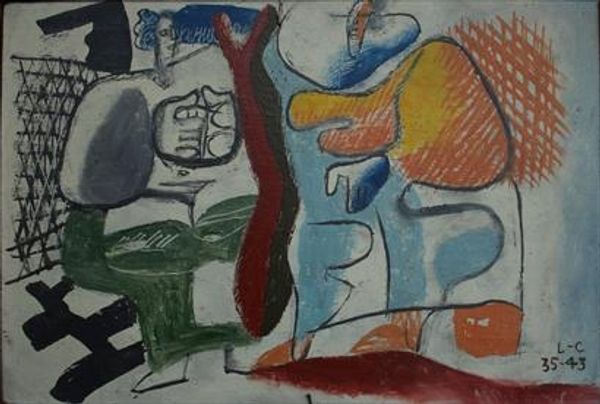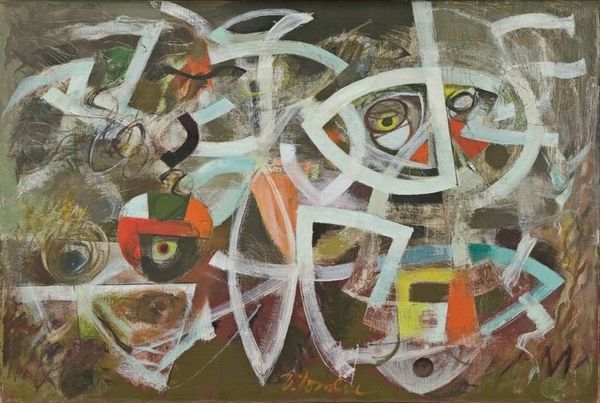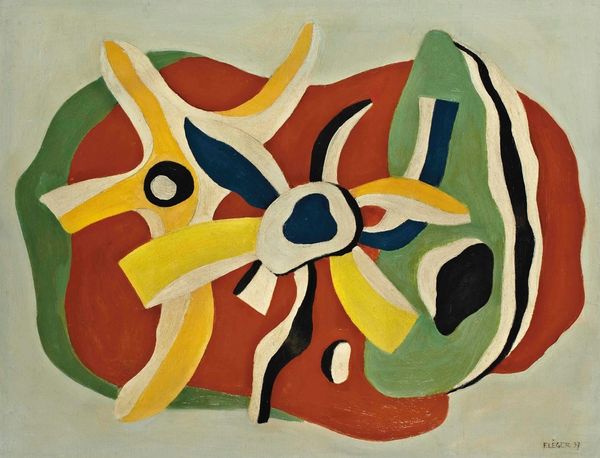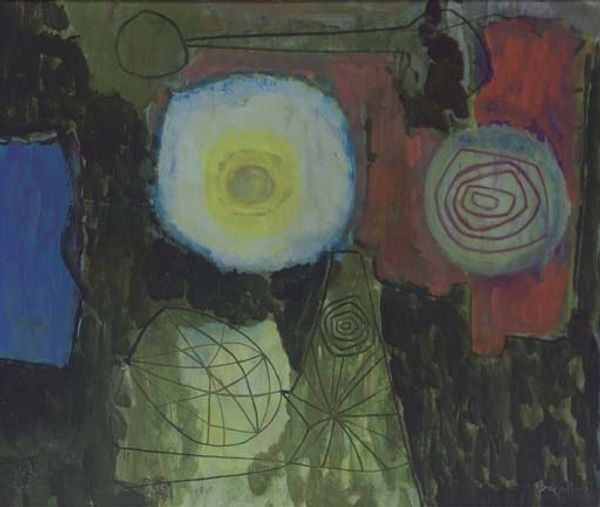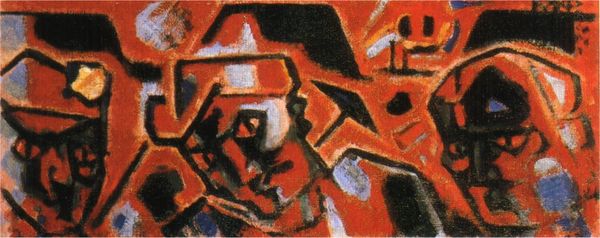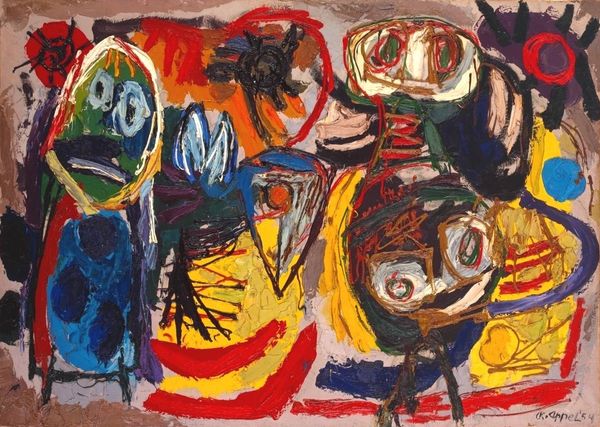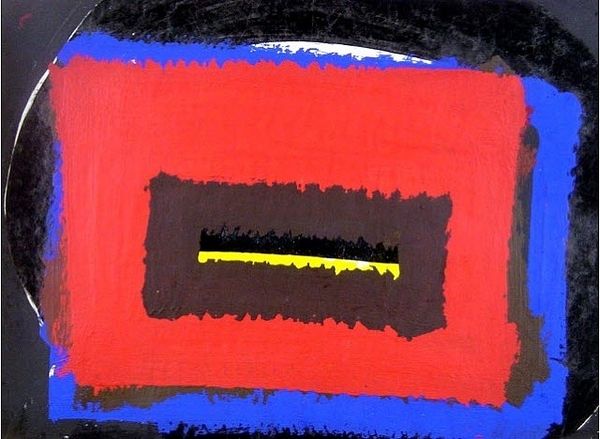
Copyright: Joan Ponc,Fair Use
Curator: This untitled canvas painting, created by Joan Ponc in 1946, immediately strikes me with its boldness. The use of heavy paint strokes seems almost visceral, don't you think? Editor: It does have a kind of primal quality. I see immediately the thick layering of oil on canvas, signs of a material and physical engagement; there’s clear, intentional texture that reveals Ponç’s process. You can practically trace his gestures across the surface. Curator: Exactly! And what's so fascinating is how he pushes the boundaries of abstraction. Despite its seemingly chaotic composition, those symbols…the cross, the circular shapes…suggest something deeper, perhaps related to his personal experiences during that period. Could these have had a different meaning for the Spanish art scene struggling under Franco? Editor: Absolutely. Think about the availability of art supplies post-war and the economic constraints on artists like Ponç. Was he forced to repurpose old materials? Also, look at how the paint is applied, the visible effort and struggle; the materiality of making it speaks volumes about a period of limitations and resourcefulness and possibly a need for expressing himself through available, limited means. Curator: Yes! This expressionist piece, full of swirly brushstrokes and vivid hues reminiscent of Fauvism, must have seemed quite rebellious at the time, flying in the face of traditional artistic conventions within the Francoist art ecosystem which strongly suppressed such movements. Editor: Considering that canvas itself was probably sourced through complex channels, its acquisition likely a political act against sanctioned art practices. Curator: It speaks volumes about his resistance. Ultimately, this painting, viewed through the lens of history and of raw materiality becomes a testament to the resilience of the artistic spirit and the hidden histories embedded within the artworks themselves. Editor: And appreciating Ponç's artistic method, gives a whole new significance to the context.
Comments
No comments
Be the first to comment and join the conversation on the ultimate creative platform.
